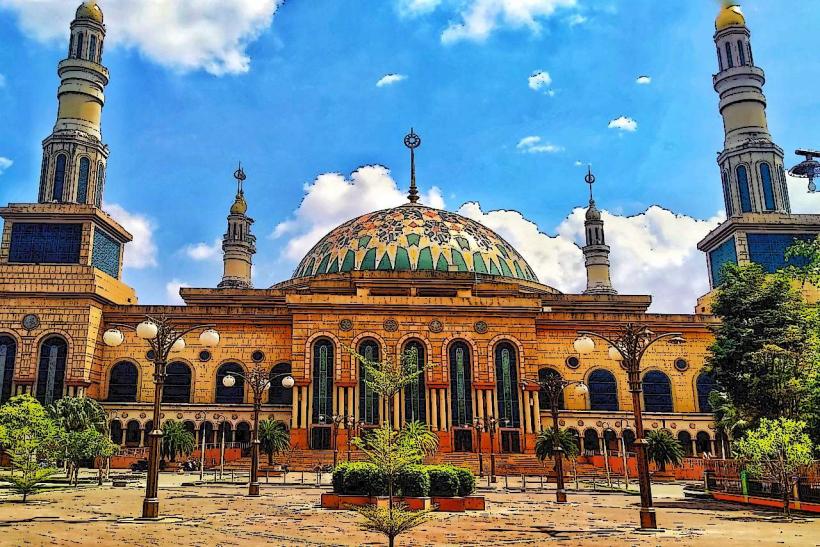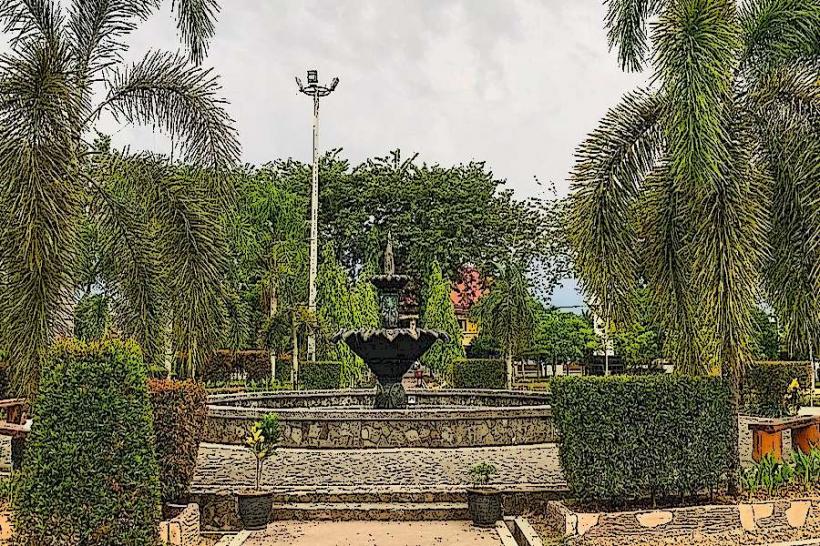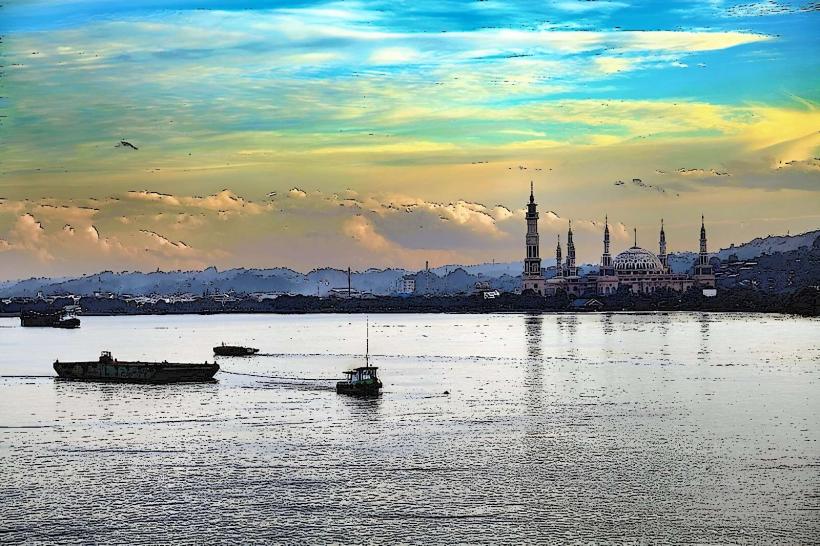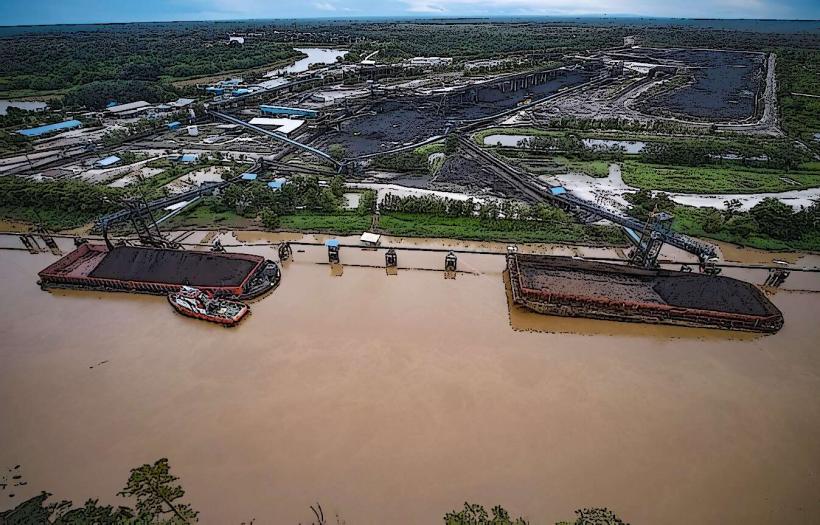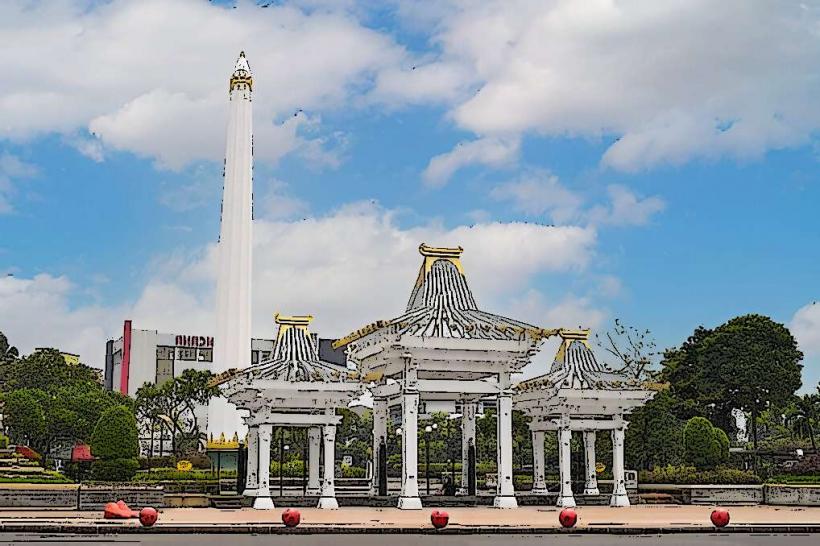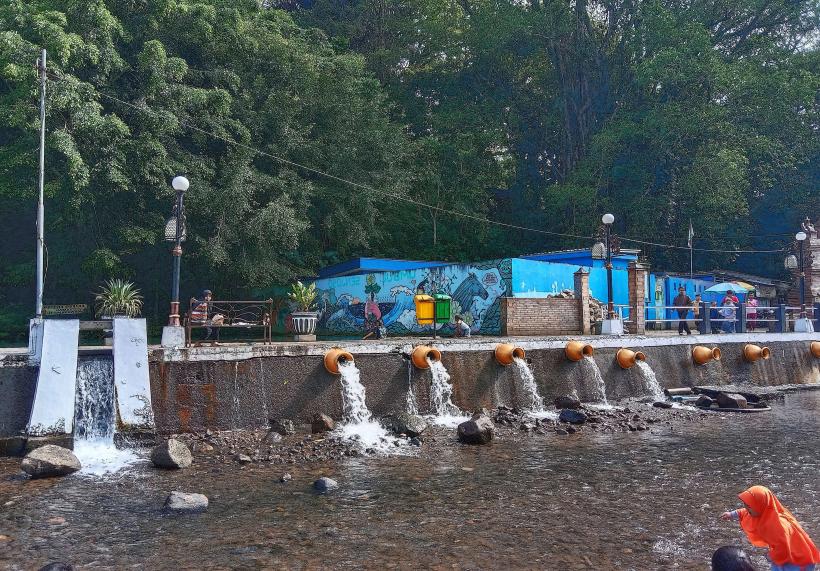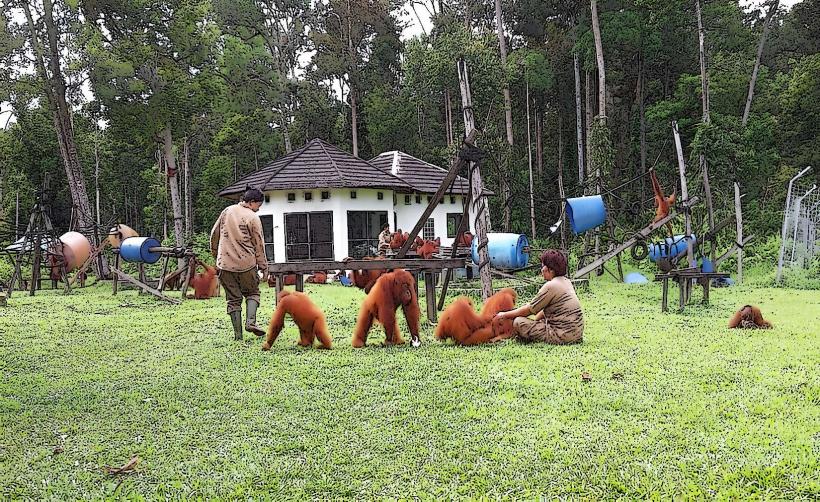Information
Landmark: Sungai Mahakam RiverCity: Samarinda
Country: Indonesia
Continent: Asia
The Sungai Mahakam River, also known as the Mahakam River, is one of the most significant and longest rivers in Borneo, flowing through the East Kalimantan province of Indonesia. It is an essential geographical feature for the region, both in terms of transportation, culture, and biodiversity. The river, with a length of approximately 920 kilometers (570 miles), flows from the mountains of central Borneo into the Makassar Strait, providing vital water resources, trade routes, and ecological habitats to the people and wildlife of the area.
Key Features of the Sungai Mahakam River:
Geography and Course:
- The Mahakam River originates in the Central Kalimantan mountains, specifically from the Mujur Hills in the Kalimantan Interior. The river flows westward before curving northward, passing through dense forests and urban areas until it reaches the Makassar Strait in the province of East Kalimantan.
- The river basin covers an extensive area, with tributaries flowing from both the east and west, contributing to the river's flow and size. Some of its major tributaries include the Belayan, Kelay, and Kuwu rivers.
Role in Transportation:
- The Mahakam River is a vital transportation route for the people of East Kalimantan, especially in the more remote and rural areas where road infrastructure may be limited. Many villages and towns along the river rely on boats and barges for the transport of goods, people, and resources.
- The river connects several cities and towns, including the provincial capital of Samarinda, which is the largest city along the river. Samarinda serves as the main economic and administrative hub in East Kalimantan, and the Mahakam River plays a crucial role in facilitating trade and commerce in the region.
Economic Importance:
- Commerce and Trade: The Mahakam River is an essential route for the transportation of commodities such as timber, coal, oil, rubber, and palm oil, which are key industries in East Kalimantan. Barges and river vessels carry bulk cargoes along the river to ports and further destinations.
- The river also supports fishing, particularly freshwater fishing, which is a key livelihood for local communities. The river provides abundant fish species, including species important for local diets and trade.
Ecological Importance:
- The Mahakam River and its surrounding basin are home to a rich and diverse range of ecosystems. The river's waters flow through tropical rainforests, peat swamps, and wetlands, which support a variety of wildlife.
- Biodiversity: The river basin is home to a large number of endemic species, some of which are critically endangered. These include the Orangutan (which inhabits nearby forests), the proboscis monkey, Bornean pygmy elephants, and various species of fish and reptiles.
- The river's wetlands and floodplains serve as breeding grounds for many bird species, including waterfowl and waders.
- The Mahakam River has been designated as part of the Mahakam Wetlands area, which has been recognized for its environmental importance in terms of biodiversity conservation and the support it provides for local ecosystems.
Cultural Significance:
- The Mahakam River has deep cultural significance for the indigenous peoples of East Kalimantan, including the Dayak, Banjarese, and Kutai tribes. For these communities, the river serves not only as a source of livelihood but also as a sacred and central part of their daily lives, with many rituals and traditional ceremonies linked to the river.
- Many indigenous groups along the Mahakam River still rely on traditional river transport, using longboats or smaller crafts to travel between villages, engage in trade, and perform ceremonies.
- Traditional fishing practices, particularly those related to the seasonal abundance of fish in the river, are an integral part of the culture and economy of local communities.
Tourism and Activities:
- The Mahakam River, with its beautiful landscapes and cultural heritage, has become a destination for eco-tourism. Visitors can explore the river's natural beauty, learn about local cultures, and enjoy the tranquil environment of Borneo’s forests and wetlands.
- Cruises and River Tours: Tourists often take river cruises to experience the wildlife and beauty of the Mahakam River. Some tours offer opportunities for watching wildlife such as orangutans, proboscis monkeys, and birds in their natural habitats.
- Fishing and Adventure: The Mahakam River is also a destination for sport fishing and river-based adventure activities. Travelers can fish in its waters or explore the river’s tributaries by canoe or boat.
Environmental Threats and Conservation:
- Like many rivers in the region, the Mahakam River faces various environmental pressures. Deforestation, mining, and oil extraction have significantly impacted the river’s ecosystem and water quality. The surrounding forest areas are being cleared for agriculture, logging, and industrial development, which contributes to soil erosion and pollution in the river.
- The river’s wetlands are also threatened by human activities, leading to the degradation of habitats for wildlife, particularly the Bornean orangutan and other endangered species.
- Local and international conservation groups have been working to raise awareness about the need to protect the Mahakam River and its surrounding ecosystems. Sustainable practices in agriculture and logging, as well as stronger environmental regulations, are essential for preserving the river’s biodiversity.
Samarinda City:
- Samarinda, the capital city of East Kalimantan, is situated along the Mahakam River and serves as the focal point for the river’s commercial and cultural activities. The city is an important hub for trade, industry, and tourism in the region.
- The riverfront area of Samarinda has been developed into a lively space for locals and visitors to enjoy. Visitors can take strolls along the river, visit markets, and enjoy the view of the bustling river traffic.
Conclusion:
The Sungai Mahakam River is a vital waterway for East Kalimantan, playing a central role in the livelihoods, cultures, and economies of the region. From serving as a transportation route for goods and people to providing a rich habitat for diverse wildlife, the river is an essential feature of Borneo’s ecosystem. Its significance extends beyond practical purposes, with deep cultural connections to the indigenous people of the region. However, the Mahakam River is also facing threats from environmental degradation, and efforts to preserve its health and biodiversity are crucial for future generations. Whether you're interested in exploring its biodiversity, experiencing local culture, or understanding its role in the region’s economy, the Mahakam River remains one of Borneo’s most iconic and important natural features.

